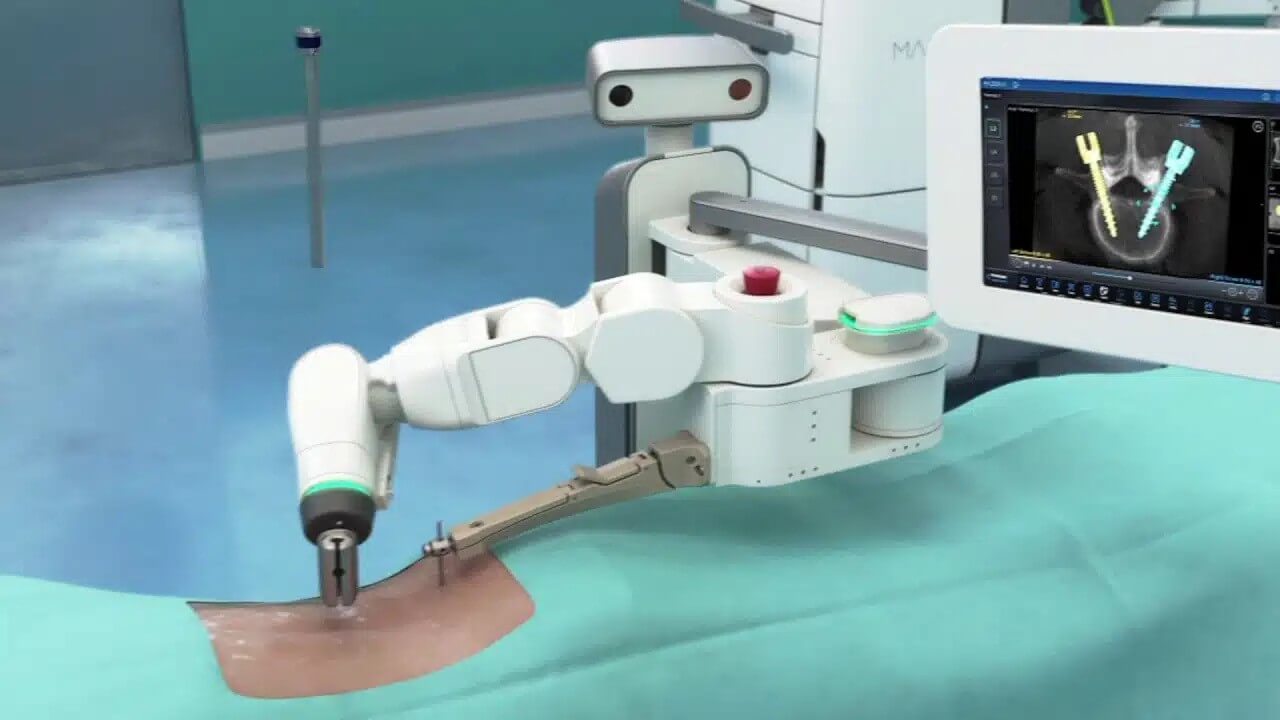- About Us
- Procedures
- Conditions Treated
- Patient Resources
- Blog
- Contact Us

“TLIF” stands for “Transforaminal Lumbar Interbody Fusion”. It is a surgical procedure used to treat spinal instability or other conditions that cause pain or nerve compression in the lower back. In a TLIF procedure, a surgeon removes the damaged or diseased disc from between two vertebrae in the lower back and replaces it with a bone graft or synthetic material. The surgeon then places screws and rods into the vertebrae to stabilize the spine and promote fusion of the bone graft with the adjacent vertebrae. The goal of a TLIF is to help alleviate pain and improve spinal stability. TLIF surgery is performed under general anesthesia and may require a hospital stay of several days and have a recovery time of several weeks to months.
Spinal fusion surgery is a procedure that involves joining two or more vertebrae together in the spine. This is typically done to alleviate pain caused by conditions such as spondylolisthesis, scoliosis, or spinal fractures. During the surgery, the surgeon will use bone grafts and/or metal hardware (such as screws and rods) to hold the vertebrae in place while they fuse together during the healing process. The goal of the surgery is to stabilize the spine and reduce pain and nerve compression.
There are several different types of spinal fusion surgeries for the back, each with their own unique approach and techniques.
Some of the most common types of spinal fusion surgeries include:
A TLIF (Transforaminal Lumbar Interbody Fusion) is named based on the specific techniques and anatomical structures involved in the procedure.
Let’s break down the word “transforaminal”. “Trans” means across or through, and “foraminal” refers to the neural foramen. The neural foramen is a small opening on the side of the spinal column through which nerves exit the spinal canal and branch out to the rest of the body. In TLIF, the surgical approach is transforaminal because the surgeon accesses the disc space through this neural foramen, working from the back and reaching the disc space through a unilateral approach.
Spinal fusion surgery is typically indicated for conditions that cause pain or instability in the spine. Some common indications for the surgery include:
There are many factors that may influence your surgeon’s decision regarding the type of fusion surgery to pursue. Here are a couple of reasons why TLIF may be considered:
It’s important to note that the choice of fusion surgery is highly individualized and depends on various factors, including the patient’s specific condition and spinal anatomy. Additionally, the surgeon’s expertise and experience with a particular fusion surgery may also play a role in determining which procedure is used.
A TLIF surgery typically takes several hours to complete and is performed under general anesthesia. Here is a general overview of what can be expected during the surgery:
After the surgery, you will be taken to the recovery area to wake up from anesthesia. You may require a hospital stay for a few days for monitoring and pain management. Physical therapy and rehabilitation are typically recommended to aid in your recovery, restore strength, and improve mobility.
In most cases, you can expect to spend 1 to 3 days in the hospital following a fusion surgery. The duration of your stay will depend on your level of pain control and your ability to move around.
It is common for patients to begin standing and walking the day after surgery. Your surgeon may give you a back brace to help you feel more comfortable and to protect the surgical fusion.
During the first several weeks after the surgery, you should be able to perform basic exercises like walking but should avoid activities such as bending, twisting, or lifting heavy objects during this time.
Most patients who undergo a fusion procedure should expect to gradually resume their normal activities over a period of several months.
As with any complex operation, there are several risks associated with spinal fusion surgery. Some of these risks include:
It’s important to consult with a qualified spine surgeon to determine if an ALIF is the right option for you.
There are many factors to be considered, including the specific condition being treated, your overall health, and your goals and expectations.
It’s also important to note that spinal fusion surgery is not always the best option for everyone. Some patients may be better served by other treatments, such as physical therapy, medications, or minimally invasive procedures.





